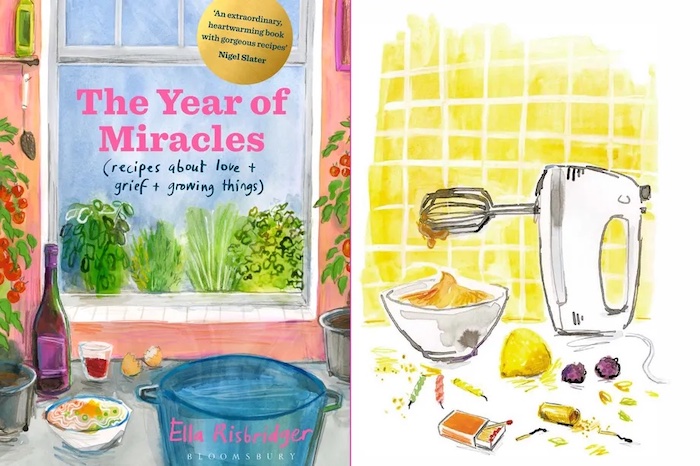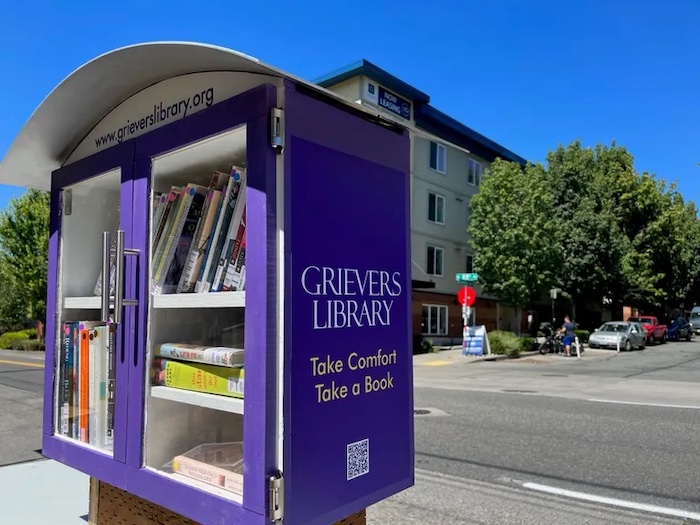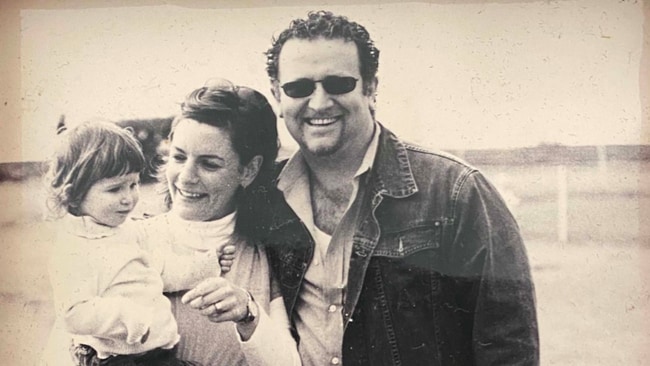
At a certain point, the emphasis shifts from keeping terminally ill seniors alive to keeping them as comfortable as possible. Saying goodbye to our loved ones can seem unbearable. But the silver lining is that your senior doesn’t have to suffer unnecessarily. Instead of continuing painful and tiresome treatments until their last moments, a senior’s care plan can change to focus on quality of life. Hospice services are often the best senior care option when a serious illness becomes terminal. A hospice provider will focus on compassionate, dignified end-of-life care.
If you’d like to learn more about options for hospice care in your area, our Resource Hub can help you easily track down senior care services in your neighborhood. This free online resource contains detailed listings of local hospice services, allowing you to assess and choose the best options for your senior.
In this article, we’ll explore everything you need to know about hospice care. This type of care is a common choice for those facing a terminal illness, and the National Hospice and Palliative Care Organization reports that more than 50% of Medicare recipients were enrolled with a hospice provider at the time of their death.
In 2014, the Huffington Post reported that the hospice industry in the United States had quadrupled in size since the turn of the century—to the point where 65% of all Americans spend the last stage of their life in hospice services. But how do you know if this type of care is right for your senior?
Hospice care: allowing your senior to die with comfort and dignity
What is hospice care?
The goal of hospice care is not to cure your senior or extend their lifespan. Instead, hospice care professionals strive to make the last few months of your senior’s life as peaceful and as comfortable as possible by addressing pain and other problematic symptoms in the best way possible.
The end result is a dignified death that allows seniors to spend more time creating valuable memories with family members instead of preoccupying themselves with futile medical care.
Hospice care is only for seniors with terminal diagnoses. If there’s still a reasonable hope for a full recovery, hospice services are not recommended. Some seniors take it upon themselves to choose a hospice care plan when faced with months of grueling surgeries, chemotherapy and overnight hospital stays. They’re perfectly within their rights to refuse medical treatment as long as they are of sound body and mind.
If your senior has become incapacitated for whatever reason (either physically or mentally), family caregivers may choose a hospice care provider on their behalf.
Hospice care involves a number of services, including:
- Medical social services
- Occupational therapy
- Physical therapy
- Speech therapy
- Caregiver support
- Grief support
- Medical equipment
- Physician services
- Pain medication
- Nursing services
- Counseling
- Spiritual support
- Emotional support
When should my senior start hospice care?
If you start hospice care too early, your senior may miss opportunities for potentially lifesaving treatment. On the other hand, starting hospice care too late can reduce the positive impacts this type of care can have on quality of life.
According to a report released by the National Hospice and Palliative Care Organization (NHPCO) in 2019, the average time Medicare patients spent in hospice during 2018 was about 90 days. However, about 28% of beneficiaries spent seven days or less in hospice care—which the NHPCO considers far too short to be beneficial.
Generally, hospice care is provided when a senior has less than six months to live.
Is hospice care the same thing as palliative care?
Both hospice care and palliative care are types of “end-of-life” care options for seniors. However, they’re not the same. Palliative care is provided while a senior continues to receive medical care for a terminal condition, while hospice care essentially abandons any potential cure or treatment and focuses entirely on comfort.
Why would my senior need hospice care?
In order for a senior to be eligible for hospice care, they must have received a terminal diagnosis. Seniors may benefit from a hospice care plan if they feel like they can no longer face further painful and uncomfortable medical procedures. Many seniors accept the reality of their situation and choose to die on their own terms instead of fighting for a highly unlikely recovery.
What are some signs my senior should seek hospice care?
There are a number of signs that could suggest it’s time to consider hospice care:
- Treatment is no longer having any effect.
- Your senior no longer wishes to receive aggressive intervention.
- The side effects of their medical treatments are becoming difficult to manage.
- They seem confused or drained by constant medical treatments.
- They are losing the ability to communicate effectively.
- They are losing their appetite.
- They spend much of their time sedated or sleeping.
- Medical professionals indicate that continued treatments will provide no benefit.
- Your senior expresses a desire to die on their own terms.
Questions to ask yourself as you consider hospice care
- Is my senior suffering from a life-limiting disease or illness?
- Is my senior suffering serious signs of decline?
- Shouldn’t my senior die on their own terms?
What services does hospice care provide?
Limiting pain and increasing comfort
Seniors who receive hospice care can limit pain with a number of options, and their pain can be controlled without frequent trips to the hospital. Whether your senior is aging in place or living in a nursing home, hospice care can make their days as comfortable as possible. For example, medical appliances and supplies can be brought to their residences (such as hospital beds and wheelchairs).
Certain therapeutic treatments can also provide relief to seniors, including physical and occupational therapy. Note that this therapy is not intended to “cure” your senior; it’s only intended to make their life more comfortable. Hospice care features a strong emphasis on holistic well-being, and it may include home health care, nursing services, medication and even respite care for family caregivers. These services are often available around the clock.
According to the National Hospice and Palliative Care Organization, 65% of seniors who entered hospice care experienced a drastic reduction of pain within just 48 hours.
Emotional support
Seniors can also receive emotional support from trained professionals when they choose hospice care. Confronting our mortality is never easy, and a range of mental health care experts, social workers, counselors and other skilled individuals can help seniors find peace and well-being as they approach the end of their life.
Spiritual support
Seniors who choose hospice care may find themselves seeking spiritual guidance. Religious leaders can visit your senior as part of their hospice experience, helping seniors navigate the process of death and consider the afterlife. Some religions suggest followers go through certain steps before they leave the world.
Limiting medical procedures
Another important aspect of hospice care is limiting medical care. If your senior chooses hospice care, they can stop undergoing difficult treatments, such as chemotherapy or dialysis. However, they may still continue with other types of treatments, such as medication for low blood pressure.
Questions about hospice care
What types of options are available with hospice care?
Hospice care can be divided into the following main categories:
- Nursing home hospice care
- In-home hospice care
- Hospice care facilities
Nursing home hospice care is an excellent choice for seniors who need to remain in long-term care facilities, while home care can be delivered to those who are aging in place. Although your senior may also attend dedicated hospice care facilities, excessive transportation is not recommended for those with terminal illnesses. For this reason, the first two choices are most common.
Is hospice care safe?
Hospice services are an established part of the medical industry in the United States, and it’s completely safe when carried out by qualified, experienced professionals. Hospice care is often misinterpreted as “helping someone to die,” but medical treatment still continues until the moment of death.
Is hospice care available for Alzheimer’s disease and other forms of dementia?
Hospice care can be catered to the needs of seniors with Alzheimer’s or dementia. Along with the aforementioned services, dementia-specific hospice care options include:
- Mental health care support specifically geared toward dementia
- Feeding
- Respite care for overwhelmed family caregivers
What questions should I ask hospice care providers?
- What will my senior’s hospice care cost?
- Does my senior meet the criteria for hospice care?
- How long will my senior survive on hospice care?
- What kind of workers/medical professionals will be assisting my senior?
- Are counselors and social workers included in hospice care?
- How often will nurses and other medical professionals come to help my senior?
- How will you manage my senior’s pain?
- What is the role of a hospice doctor?
- What happens if my senior’s condition improves?
- What happens if I decide to halt hospice care?
How to talk to family members about hospice care
Broaching the topic of hospice care can be uncomfortable. It’s important to approach this topic in a careful, considerate manner.
Hospice care is a topic you should also discuss with the entire family. Some family members may want your senior to continue fighting until the bitter end and may not want to accept that the battle is already lost. When you discuss this type of care, try to bring the entire family together and give each person a chance to speak.
How to approach the topic of hospice care with your senior
Seniors may not want to confront the possibility of their own mortality, and the conversation may become extremely emotional.
On the other hand, many seniors achieve a sense of calm and focus when they accept their fate, and they may be glad that you brought up the possibility of hospice services. Indeed, they may be thankful that you’re giving them the option to end life on their own terms and cease painful treatments.
Questions to help a senior consider hospice care
- You’ve been fighting your illness for so long. Wouldn’t you like to be more comfortable now?
- Wouldn’t you like to go out on your own terms?
- You’ve been spending so much time in the hospital. Wouldn’t you like to spend more time with your family members before you leave us?
Paying for hospice care
How much does hospice care cost?
The cost of hospice care depends on the services and treatments your senior requires. Some seniors require only pain control and emotional support, while others might require more extensive care options like rehab, medical equipment and more. It’s worth noting that hospice care will probably be cheaper than continuing additional medical treatments that will not cure your senior.
Can I get help paying for hospice care?
The good news is you can get help paying for hospice care from a number of potential sources:
- Medicare: Medicare can provide funding for hospice care under certain circumstances. Medicare’s hospice benefit applies if your doctor certifies your senior has a life expectancy of six months or less. Once your hospice benefit begins, Medicare will not cover anything intended to cure the terminal illness but will cover all hospice care costs.
- Medicaid: The Medicaid hospice benefit provides nursing, physician services, counseling and more to those with a terminal diagnosis. Coverage includes home care, short-term inpatient care, respite care, equipment and more. Patients must file their election statement with a chosen hospice provider to be eligible.
- Veterans Benefits: Veterans Benefits provides VA Palliative Care for enrolled veterans. Coverage includes the cost of a health care team, which not only includes medical professionals but also mental health workers and chaplains.
- Private insurance: In some cases, private insurance plans will cover hospice care. However, it really depends on your specific plan, and you’ll need to read the fine print to be sure.
How can I find hospice care near me?
If you’ve been searching for hospice care near you, it’s easier than ever to locate qualified, reputable care options. Refer to our Resource Hub for detailed listings of hospice care providers in your neighborhood. It’s as easy as visiting this free online resource, browsing your options, and choosing the best hospice care provider nearby.
Complete Article ↪HERE↩!





:no_upscale()/cdn.vox-cdn.com/uploads/chorus_asset/file/23907760/April.jpg)

